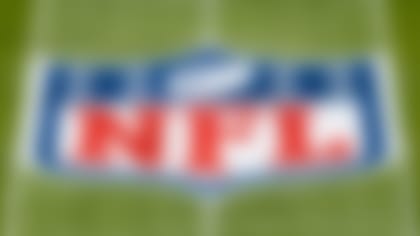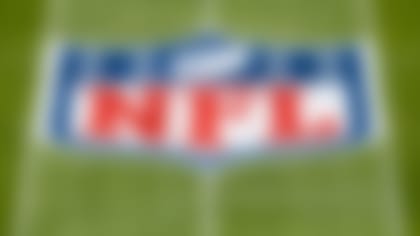The NFL held a press briefing during the December League Meeting to discuss the new NFL-AWS partnership. The meeting took place in Las Colinas, Texas, on December 11, 2019. The following is a transcript.
Speakers:
- Jeff Miller, NFL Executive Vice President, Player Health and Safety Innovation
- Jennifer Langton, NFL Senior Vice President, Player Health and Safety Innovation
- Dr. Allen Sills, NFL Chief Medical Officer
Jeff Miller: The Player Health and Safety department's focus [in the League Meeting] was on the recently announced the AWS partnership – the Amazon Web Services partnership – from last week, which as a refresher, is an effort to improve the health and safety of our sport and for the athletes who play. We've taken a look at, you know, injuries on field as well as all sorts of other information about players to collect with data on players, play types, the speeds at which they run, the equipment that they wear and offered as a result insights into potential rules changes or equipment design changes or advances that can be made in that equipment over the last few years. It is a laborious process, to say the least, it's a manual one. And our partnership with AWS is going to be able to provide our data and the video that goes with it, with their machine learning, artificial intelligence, computer vision capabilities, to combine those to improve the scale and the scope of the work that we're doing so we can try to advance the health and safety of our sport much faster than we're doing today.
One concept that comes from this is the Digital Athlete, which is the virtual representation of an NFL athlete. So that we can simulate over and over and over again millions of times changes to rules, changes to equipment to see how they would affect overall, the health and safety of the player. That's something that's aspirational, but over the course of our three-year partnership, something we believe we'll be able to achieve. And obviously there's applications for that beyond the game of football, maybe other levels of our sport, other sports entirely, as we better understand how our athletes behave, what injuries could occur, and hopefully someday we will predict injuries before they happen – do risk estimation for particular players and position types and be able to intervene with training techniques or advanced sports medicine.
So with that as background, Jennifer Langton on our team here has led the engagement with AWS and then we'll turn over to Dr. Sills who will say a little bit from a doctor's perspective on some of these relationships and the advances we're looking to make.
Jennifer Langton: Thank you, Jeff. So for years under our Engineering Roadmap, Dr. Jeff Crandall, who I'm sure you have all heard of and read about, has led a team of biomechanical engineers though a very laborious process of every concussion being tracked on the field, and also taking a look at behaviors that cause it. Over the course of this work that Jeff and I both manage, we really started to think about what we can better understand to automate this laborious process. And if we had taken injury and engineering data produced from that process, and correlated that with gameplay, environment, protective equipment that's being worn, what are the insights that we could draw? Which did become rules changes — but again, it's still a very laborious process. So with that in mind, we began to talk to AWS about our rich data, their tools and technologies, and what we could do together.
As a reminder, AWS and the NFL have been working together for the past two seasons to track player speeds, field locations and movement patterns through the Next Gen Stats platform. Now through our partnership, we'll be able to advance player health and safety in very new and very meaningful ways. With AWS technology and their analytic tools, we will be able to pool aggregated, anonymized data that we already have, and deliver insights against the data in unprecedented ways through speed and scale. Particularly here in our hundredth season, we look ahead to the future of football and remain committed to driving innovation in the health and safety of our players as well as our fans.
Dr. Allen Sills: Thanks, Jeff and Jennifer, just a couple comments from the physician side. And you know, this is an incredibly exciting partnership, I think, because one of the very unique things about the NFL from a health and safety perspective is just the amount of data that we have. Having so much data not only about our injuries, but about game environments, and then by combining that with the video, it's just a rich data source that almost no other organization has. So as a physician and a scientist that's really exciting.
I think there are three key things about this and the impact it can have. One, you heard both of them reference the manual aspect. When we look at concussions, for example, we literally have folks on our team go through and view every play and chart off variables about who hit who and speed and direction. And they do that for every single head impact, and every single concussion-causing play. That's an incredibly laborious, manual process. Now with this partnership, we have the opportunity to automate that, bring machine learning to that, so that's really exciting to be able to scale that up. Secondly, is prevention. You know, in medicine, we always say that the best treatment is prevention. And so this Digital Athlete platform provides the opportunity to look at ways that we might actually prevent injuries, again through equipment, through rules changes and through style of play. And then I think the third part is rehabilitation, you know, we can actually look at how we treat injuries, how we rehab athletes and how they come back, and how that might be affected by some of these various factors. So, there's a lot there to unpack. Again, as a surgeon, I don't usually get to see my patients before they're in a diseased state, you know, they already come in with something wrong with them. So having this opportunity to take this Digital Athlete in a well-state and then model against a number of different variables is just a really exciting process. So I think this is a great partnership and something I'm really excited to see impact not only what we're doing in the NFL, not only what we're doing in football, but really the broader sports medicine community. I see this as having a great opportunity to affect a lot of areas in sports medicine.
Question: Just a factual point. Does this extension of this deal with AWS include marketing rights, can they talk about, promote the injury prevention side of their deal in the same way they can Next Gen Stats?
Jeff Miller: It is an extension of the marketing deal.
Question: Okay, a follow up on that – is there any concern or hesitation about that? I mean, entities have gotten in trouble before by going further than the science and promoting what you can do within the medical sphere. Is there any discussion of being careful? And what can happen now versus hopes to happen in five or 10 years?
Jeff Miller: No, I don't think there's been there's significant concern there. It's a combination of the data that we currently collect, the information that we already rely upon with our work with a new set of tools. Right? The NFL does not have machine learning capability. We don't have a lot of people focused on artificial intelligence, or computer vision or pose estimation or any number of other things. So, it's really the growth in the scale and the scope of the work that we're doing now, manually, with a set of tools and expertise that we don't currently have.
Question: How do you feel overall about the way that the continually updated concussion protocol has played out through the course of the season, and it's been about three months since the Sterling Shepard review began, has that been concluded?
Dr. Allen Sills: Yeah, we obviously continue to try to upgrade our concussion detection efforts. I'm really proud of what we have in place, in the sense that we've got a really robust concussion protocol. You know, we published it in a medical journal last year. And it's now being looked at by a lot of leagues around the world, I think, as a standard. And so we're proud of that. At the same time, we always want to get better. And we can never let our guard down; we have to remain really vigilant about how we do that. So our detection efforts will continue to get better year over year, we try to do that by training our people, and by looking at how we actually detect concussion for the exams that we actually do. We continue to upgrade our video system, so we make sure we capture more of the field, which is a challenge when you have that many people moving in space. So all of those things are ongoing.
Around the Shepherd incident, I can just say that, we've been having a lot of discussions with the Players Association about that; there has been internal follow-up. We haven't announced anything yet to that but, it's been looked into quite thoroughly. And I will say that we continue to work together very closely with the Players Association and players self-reporting concussions. You know, that's an important thing. We've actually got some data that says that if you report the concussion sooner you actually return sooner. And we think that's really important for everyone to understand, that it's all about getting in the diagnosis and beginning the rehab process as quickly as you can.
Question: I know we still have a few weeks to go, but do you have any further injury data at this point?
Jeff Miller: We don't. We'll share injury information when the season's over when we've had a chance to aggregate it all. The information we shared in the preseason is probably the most recent time we talked about it, where we have concussion numbers that were equal to last year. And practice numbers that were down substantially, which was a goal of ours, to try to drive those numbers down in conjunction with our Competition Committee and clubs and talking about the different drills. But we had a substantial decrease last year, right, 29% decrease in concussions year over year. The fact that the numbers in the preseason as an example, were stable, we think is probably a positive thing, right? The notion that you could, you know, decrease 29% over the year is probably a little bit, you know, taxing on the imagination, but it is our goal to continue to drive those numbers down, both by looking at the plays, practices – especially in the preseason, the equipment the players were wearing, and on that point, we're now in 99 plus percent of players are in the best protected equipment. So, Rich and Troy talked a little bit about the use of the helmet rule, they talked about the blindside block, which are things that we were pleased to be able to participate with and the trends that we identified in the information, and then they worked against. The helmet data continues to head in the right direction in the preseason. While the numbers were level, it's not necessarily a bad story for us. So we think all in all that there will be a lot more insights when we aggregate all the information, but based on what we saw in the preseason, we're you know, we're okay with where those things are at.
Dr. Allen Sills: I will just add real quick to that is, as Jeff mentioned, you know, it's not just the total numbers but it's who's being injured and what type of play type, and who those players are. And you know, that's something we spend quite a bit of time with. It's not just the total numbers, but really trying to understand all the factors that go into that.
Question: A couple years ago you showed us in Minneapolis the referee, the spotter in the sky spot. Has that actually bore fruit? Has there been calling down to the referees and identifying players to take out of the game?
Dr. Allen Sills: Are you referring to the booth UNC? Because we've had spotters for about seven years. We added the UNC in the booth at the end of the 2017 season. Okay, so just to clarify that is the unaffiliated neurotrauma consultant. We put a third one in place – one on each sideline and we put one in the booth. I think we have seen that become a really valuable part of our team. What happens in that booth, is you've got two athletic trainer spotters. And then you've got that unaffiliated neurotrauma consultant, and they essentially make a team in injury recognition and communication with the sideline. So I would say specific to your question, yes, we've seen value-add there from the identification of injuries. And again, there's a dialogue that goes on between the providers on the sideline and those individuals who obviously are seeing on the video with a simple goal, and that's trying to recognize any injured player. I'll say with that, you know that that's part of our medical timeout, when they call down and we are seeing some increased numbers of that this season, which we think is a good thing, because again, it's our goal to identify anyone who might be injured on-field and make sure that they're removed to be examined before they have a chance to continue to play. So I would say that has been a good addition to our system.












